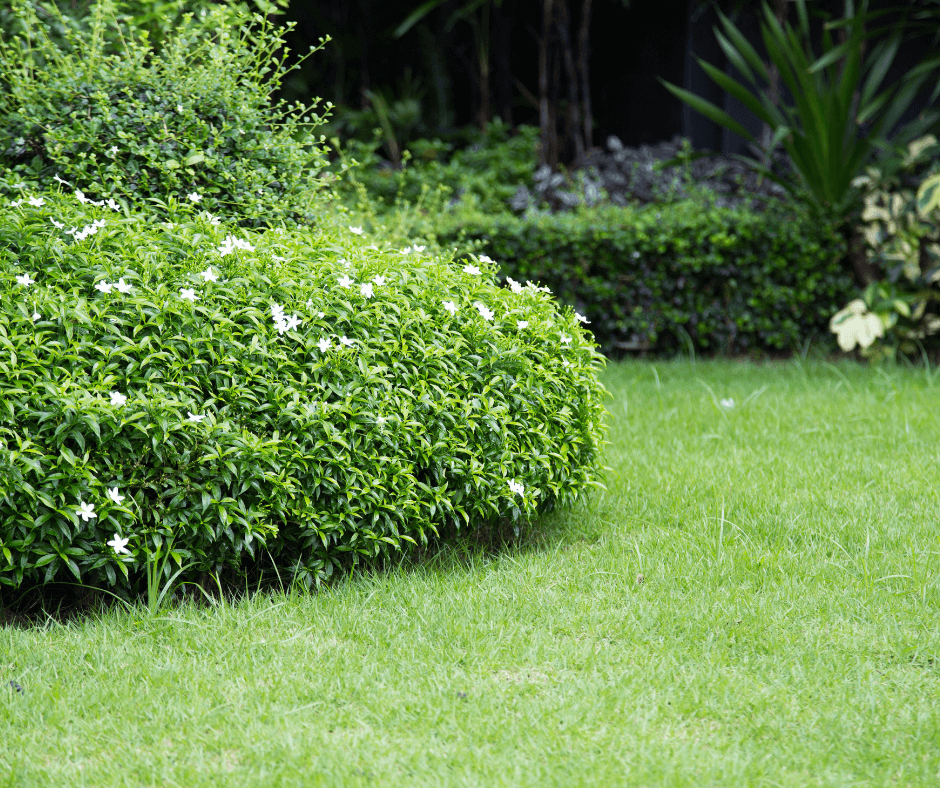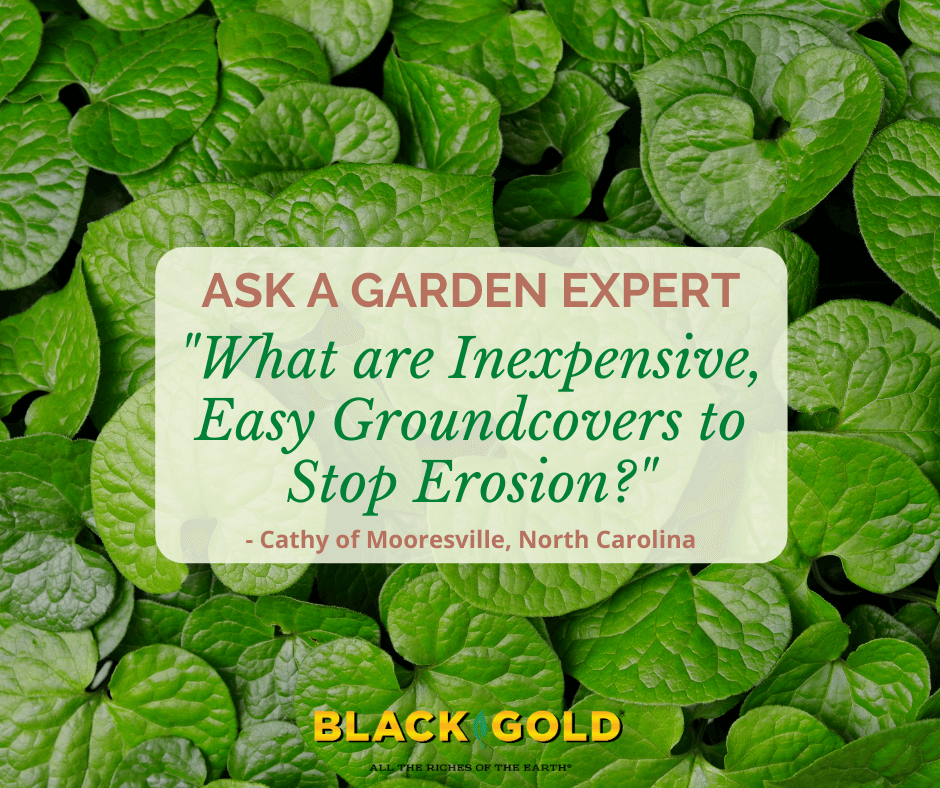“We have a small fenced-in backyard with a dog. Due to sloping, and poor drainage, we have little topsoil left, but a lot of mud that gets tracked in the house. Are there any inexpensive suggestions for easy-to-grow hardy ground coverings or grass that will alleviate these issues? Our back yard has a mixture of sun and shade and is primarily red mud, so any assistance would be greatly appreciated! THANKS!!!” –Cathy of Mooresville, North Carolina
Answer: Whatever you plant, you will need to allow it to become established before you let your dogs back in the yard. It sounds like this is a problem that will take several steps, even if you choose the least expensive approaches. Here are my recommendations.
Steps for Establishing a Lawn and Groundcover on Sloped, Clay Ground

Here are my recommendations for managing your erosion and muddy yard troubles.
- Identify and attempt to stop the source of erosion. If you can identify the water source (a bad gutter or washout from a driveway or a patio), you can often divert the water away from your yard by creating dry-wells. The method of diversion will depend on the source. (Click here for some more ideas and here.)
- Define sunny lawn areas and shaded groundcover areas around the base of trees. Athletic Field Fluorescent Orange Striping Spray Paint works well for drawing out bed areas on the soil. Be sure that you create appealing lines for tree beds or gardens.
- Scratch up lawn areas with a hard rake, top-dress the soil with approximately 1 inch of Black Gold Garden Compost Blend or Black Gold Canadian Sphagnum Peat Moss, then lay down a cost-effective biofabric with grass seed, like Grotrax Burmuda Rye Mix, which can be purchased by the roll. Products like these stop erosion while encouraging lawn establishment. Follow the manufacturer’s recommendations for care (click here for more information), and keep pets and people off of the area until it has fully sprouted and started to become lush.
- In shaded bed areas around trees, I recommending working up the soil and adding lots of compost amendment. If your yard is large, consider buying it by the yard from a landscape company because it costs less. Finally, cover the beds with quality, all-natural bark mulch, which is also cheaper when purchased in bulk by the yard.
- Plant plugs of groundcover for dry shade in the beds then water them in. A good groundcover layer will hold the soil in place as it becomes established (list below).
- Keep the plugs watered and cared for until they begin to really grow and spread–around two to three months.
- You may also create stone or pebble pathways for your dogs where they run the most. (Click here for a good DIY idea.)
Good Groundcovers for Dry Shade and Clay
There are lots of good groundcovers for a difficult, dry shade that reduce or stop erosion. Buy these by the flat at your favorite local garden center to get the best deal. Good choices include creeping wire vine (Muehlenbeckia axillaris ‘Nana’, light shade, Zones 6-10), sweet box (Sarcococca hookeriana var. humilis, Zones 6-9), evergreen vinca (Vinca minor, shade, Zones 4-9), dwarf mondo grass (Ophiopogon japonicus ‘Nana’, shade, Zones 6-11), and the evergreen creeping plum yew (Cephalotaxus harringtonia ‘Prostrata’, Zones 6-9).
If you like native groundcovers, consider evergreen arrowleaf ginger (Asarum arifolium, shade, Zones 3-9) or wild ginger (Asarum canadense, Zones 3-8), Allegheny spurge (Pachysandra procumbens, shade, Zones 4-9), and the pretty green-and-gold (Chrysogonum virginianum, part sun to shade, Zones 5-8). Any of these plants can be mixed.
I also recommend that you click here to learn more about the best garden mulches and creative groundcovers.
I hope that these solutions help!
Happy gardening,
Black Gold Horticulturist
Jessie Keith

